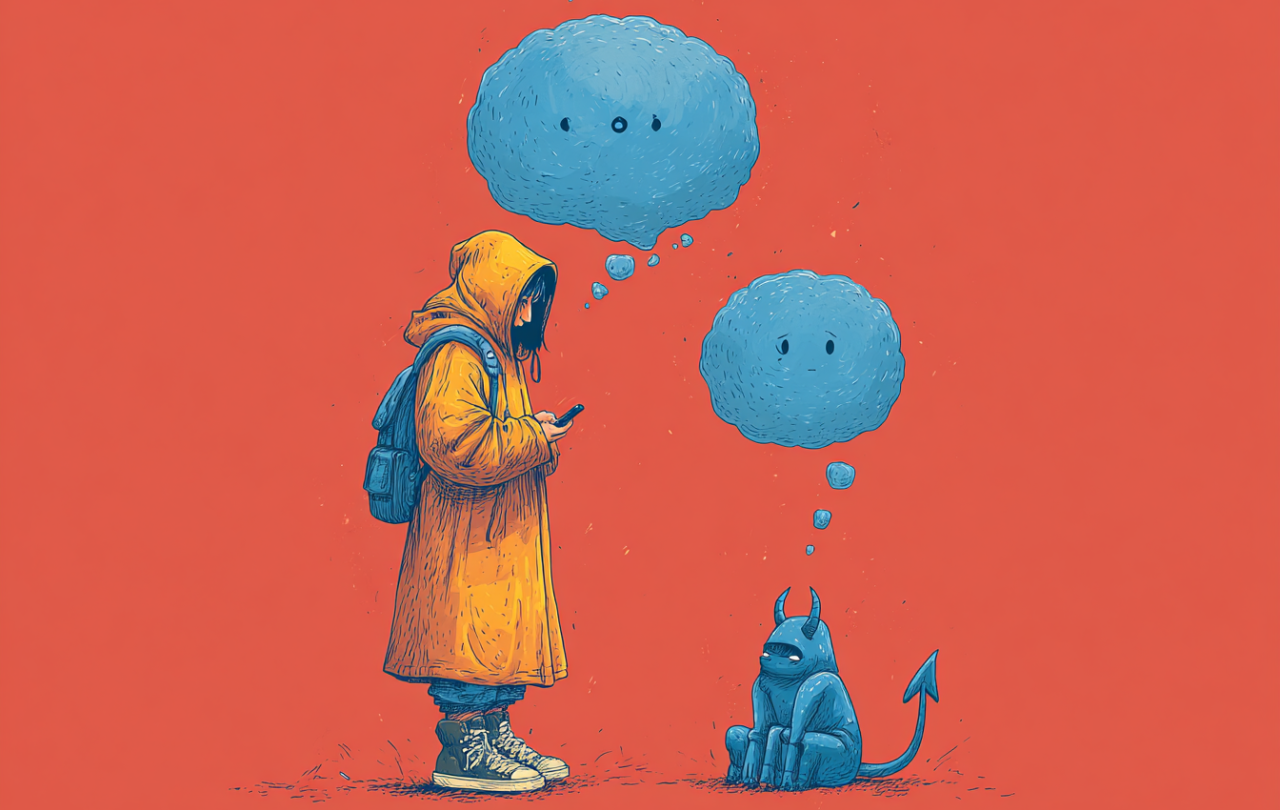
Inside a book, we find ‘a world that reflects our own, but isn’t this world’, at least that’s what David Bennett had to say when he appeared on our Re-enchanting podcast earlier this year, and given the power of books to transport us beyond the everyday, what better way to start each episode than with the question, ‘what are you reading?’
Many of our guests are self-confessed bookworms and admit to having several books on the go at once, dipping in and out according to their mood and the time of day, and a sizeable number profess a love of audiobooks. So, after a blitz of the Seen & Unseen back-catalogue – accompanied by many sidetracks into our guests’ ponderings with Belle Tindall and Justin Brierley – here’s what’s on the Re-enchanting reading list.
Chapter one: by way of introduction
At first glance, it would seem that our guests are a serious bunch, because the Re-enchanting book list is dominated by non-fiction. Works on the intersection of science, religion and society are clear front-runners, ranging from R.H. Tawney’s Religion and the Rise of Capitalism (Francis Spufford’s pick) to Charles Foster’s The Selfless Gene (Paul Kingsnorth), but more general works also abound. An interest in re-enchantment clearly involves careful study of the everyday from cradle – Jonathan Haidt’s The Anxious Generation (Sarah Irving-Stonebreaker) – to grave, for example, Stephen and Cynthia Covey’s father-daughter collaboration, Live Life in Crescendo, Your Most Important Work is Always Ahead of You (Michael Hastings). Some encouraging words at a time when questions about ageing and illness are on the national agenda.
Chapter two: heading (east) into deeper waters
As a podcast that invites its guests onto the roof of Lambeth Palace Library, it will come as no surprise that our guests’ picks also feature a selection of books on theology and spirituality. Nick Spencer recommends Prophecy and Discernment by Walter Moberly, whilst Brooklyn pastor Rasool Berry brings us back down to earth with Sam Alberry’s What God Has to Say About Our Bodies: Why the Gospel is Good News for Our Physical Selves.
Many guests, however, seem to be directing our attention eastwards towards the spirituality of Orthodox Christianity; their picks include classics such as Michael Kozlov and Arsenius Troyepolsky’s The Way of the Pilgrim (Martin Shaw); and The Art of Prayer by Hegumen Khariton (Molly Worthen); as well as a newer work by the twentieth-century saint, Porphyrios of Kafsokalyvia, Wounded by Love (Paul Kingsnorth). But this road of literary spirituality doesn’t stop in Eastern Europe, it keeps going until our arrival in Nepal via the memoirs and meditations of Tenzin Palmo in Cave in the Snow: A Western Woman’s Quest for Enlightenment (Sabina Alkira). Stories of global faith for a globalised world indeed.
Chapter three: story of my life
It is said that the best stories are the real ones and our guests apparently agree: biographies and memoirs pop up repeatedly throughout their picks. Sticking with the theme of spiritual journeys, our guests are reading works which recount journeys away from faith communities, such as Megan Phelps-Roper’s Unfollow (Glen Scrivener), as well as ones deeper into faith. One of the most striking of these is James Pennington’s nineteenth-century abolitionist pamphlet Two Years Absence (Esau McCaulley). Pennington was a self-taught pastor who left his church community following his re-enfranchisement to study theology at Princeton. His pamphlet was adapted from a sermon given to prepare his congregation for the journey which would take him deeper into his faith, but away from the community in which he lived it out. Many stories begin with a ‘setting out’ only to ‘return home’ in the closing pages, and perhaps this structure bears a closer resemblance to real life than it may initially appear?
Venturing away from the spiritual, but remaining in the political vein, perhaps the most frequently mentioned book so far has to be Rory Stewart’s memoir Politics on the Edge, himself a Re-enchanting guest way back in series 2. Alternatively, readers who have had their fill of politics may wish to try the memoirs of polar explorer Robert Bartlett, as recommended by Molly Worthen, or, to take a leaf from Milton Jones, the equally fascinating and no-less-hair-raising Windswept and Interesting: My Autobiography by Billy Connolly.
So far, fiction has not featured much amongst our guests’ recommendations, but tentative favourite would be the Pulitzer prize-winning novel by Barbara Kingsolver, Demon Copperhead. Set in present-day Appalachia and inspired by Charles Dickens’ David Copperfield, Demon Copperhead touches on the poverty and struggles of America’s left-behind communities, who today find themselves worlds away from the glitz of global politics, yet wielding a political influence that extends far beyond their own borders.
Chapter four: A whole new world or the world reimagined?
In the instances when fiction has appeared in our guests’ bed stands, it seems that they have a taste for fantasy and science fiction. The favourite by far here is C. S. Lewis, with several guests reminiscing of their experience of reading Narnia, but for Jack Palmer-Wright the experience of rereading The Lion, the Witch and the Wardrobe took special significance this year as he introduced it to his five-year-old for the first time. Adult readers looking to relive the experience of discovering Lewis for the first time should check out Lewis’ lesser-known Space Trilogy, particularly That Hideous Strength: A Modern Fairytale for Grown-Ups, recommended by Holly Ordway as a prophetic tale for today’s world.
Other stalwarts of the fantasy genre also made an appearance, such as J. R. R. Tolkien and J. K. Rowling, but perhaps the most surprising recommendation to come out of Re-enchanting would be Margaret Cavendish’s The Blazing World (Frank Skinner). Published in 1666 and considered to be perhaps the first science-fiction novel, The Blazing World is set in a parallel world with fantastical technologies reached via the North Pole. The characters, including Cavendish herself, criss-cross between worlds as the novel moves through its three sections, ‘Romancical’, ‘Philosophical’ and ‘Fantastical’, exploring questions of social organisation, governance, and whether it is really possible to create a new religion complete with a fully fledged religious literature. Given the ongoing conversations about the place of religion in the twenty-first century, perhaps it’s time for Cavendish to make a comeback.
Chapter five: what next?
Stories are made of words but they are also made of silences, and these narrative gaps are just as key to getting a story to take flight as the most well-chosen, well-balanced phrase. The biggest gap in our Re-enchanting reading list is poetry. Books about poets – the Romantics, Seamus Heaney, to name a couple - have made an appearance, but we have yet to receive a straightforward poetry recommendation from any of our guests. So, should you feel the need to fill this gap, here’s a few from us for anyone looking for something to dip into over the coming year.
- Sara Teasdale
- Mary Oliver
- Gerard Manley Hopkins
- Jackie Kay
- Jalāl al-Dīn Muhammad Rūmī
- Victor Hugo
Happy reading and see you in 2025 for more Re-enchanting.
2024 staff picks
And here’s the picks from the rest of the Seen & Unseen editorial team.
Graham Tomlin, editor-in-chief
- Sally Rooney: Normal People.
- Jessie Childs: The Siege of Loyalty House: A New History of the English Civil War.
Belle Tindall, staff writer
- Selina Stone: Tarry Awhile .
- Sally Rooney: Intermezzo.
Frank C. Laubach: Letters from a Modern Mystic.
Nick Jones, senior editor
- Jon Fosse: A Shining.
- Mary Millar: Jane Haining – A Life of Love and Courage.
- Peter Ross: Steeple Chasing.
Join with us - Behind the Seen
Seen & Unseen is free for everyone and is made possible through the generosity of our amazing community of supporters.
If you’re enjoying Seen & Unseen, would you consider making a gift towards our work?
Alongside other benefits (book discounts etc.), you’ll receive an extra fortnightly email from me sharing what I’m reading and my reflections on the ideas that are shaping our times.
Graham Tomlin
Editor-in-Chief





